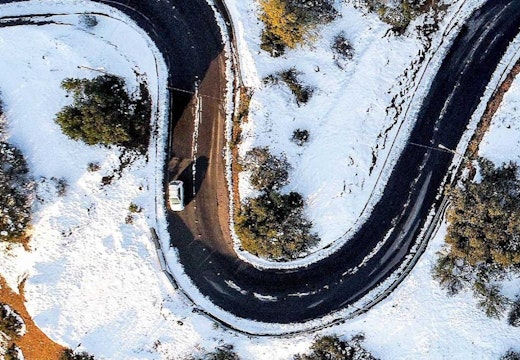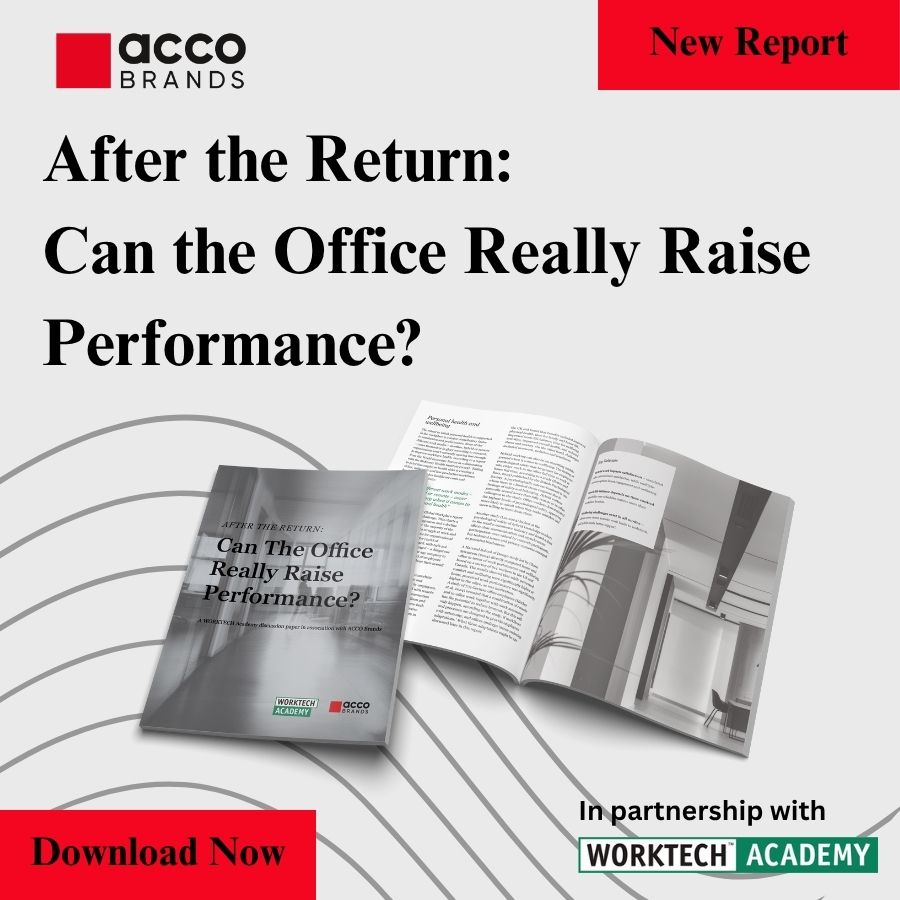Day in the Life 2040: navigating the future of work
Imagine taking a crystal ball and describing what a typical day in the life might look like 20 years from now. Simon Elliot sets out some optimistic possibilities…
Paulo and his wife Adanna have moved into Waterford Oaks Community, a former shopping mall in the suburbs of Los Angeles. The big box stores are long gone, replaced with apartments. Both Paulo and his wife are in marketing. They chose Waterford Oaks as it was building a like-minded community with all the attractions and amenities that apparently marketing folks were attracted to.
Paulo was a little cynical at first but now, after two years living there, they are really enjoying it. Both of them used to work for corporations, Adanna at a film studio and Paulo in a bank headquarters located downtown. Monday to Friday, every week, in opposite directions, two cars, and two-hour commutes each, every day. Now, they work for several organisations, remotely, focusing on what they do best and, thank goodness, no need for that mindless commuting anymore. Life had gotten so much better since moving.
Breakfast overlooking the orchard
Paulo grew up in Brazil, he was in his early teens during Covid-19 and the country lost too many lives to the virus. His parents managed to get out, to San Francisco and to relative safety. Adanna was born in Kenya, East Africa; they met at college.
They finish off breakfast overlooking the orchard and gardens below that used to be the Macy’s car park. They both check their Comfy App that help them manage their life in the community, appointments, calendar, connections, and all the Internet of Things dotted around Waterford Oaks.
They head downstairs, hop onto their mountain bikes and out on the trail that weaves around the property, past the lake where the cinema complex used to be, Paulo heading to a meeting at the newly built Kimpton Hospitality Suites, and Adanna off to the community leisure centre for a swim and a massage treatment.
Most of their business is done over video conferencing nowadays. After Zoom’s rise during Covid-19, the company developed hologram meeting technology that was almost as good as face to face without the time and cost of travel.
Boutique community centre
This boutique hotel and conference centre is a great place to hang out and meet with visitors if they are in town. It is part of their community now, a refreshing alternative to working from home or in one of the many coffee shops and work zones in the community. This is where friends and relatives stay when visiting; they hold parties there; Paulo and Adanna actually had their wedding reception there.
After his meeting, Paulo has a couple of appointments – one via WebEx with his physician, then online with his optician – before meeting Adanna for lunch. The brains of the community have matched their group’s needs with appropriate amenities. Today, they are having lunch at the Farm Shop, a cool, scratch kitchen with a local ingredients kind of vibe. They are meeting with a couple of friends they’ve met in the community, both marketeers, who moved down from Denver to Waterford Oaks for the same reasons.
There is one community for Professional Services with its own theatre and opera house. One for Gamers that includes a skateboard park and amusement park look and feel. A Social Media community outside San Francisco with an eclectic mix of global cuisine and funky looking boutiques. Paulo was sceptical at first, but he now realises that they are spot on.
Apparently, there are also company communities too. General Motors and Ford have one in Detroit, Apple built one wrapped around its flying saucer HQ, and Nike has built a huge community and playground around its HQ in Beaverton, Oregon.
‘Waterford Oaks is a completely curated community focused on the needs, wants and aspirations of its residents…’
A lot has changed though since the 2020 pandemic. Meat is now a treat, maybe once a month, the rest of their menu is plant based and far healthier. The average weight of individuals has reduced by 20 per cent over the past 20 years, and the positive impact on the environment is reversing the negative trend built up over several decades.
Flying days are over
Paulo doesn’t miss the commute, or the business flying. In his first year at the bank he flew over 100,000 miles with American Airlines to get the dubious reward of Executive Platinum and accumulate over a million Hilton Points staying in places he had no desire to be. He recalls a trip to Europe at the breakout of Covid-264, returning and surrounded by passengers through immigration, all with masks, coughing and spluttering. The very thought makes him shiver.
They have got rid of their two cars, they don’t need them anymore. As part of their community dues, there is a small fleet of Teslas to use anytime they want such as an occasional road trip treat to the countryside or up the coast. That is more for nostalgia, if they had to be anywhere they would get the Air-Taxi, an autonomous flight vehicle from the community’s Sky-Port that could get them anywhere in the LA area in around half an hour or less. That said, they tend to stay in the community – after all, there is everything that they need here.
Self-sufficient in a crisis
Paulo works with a company that struggled during the last pandemic. They were over-leveraged with debt and revenues halved. They got swallowed up and are now trying to reimagine their business model – Paulo is helping them with that. That’s what he’s good at and enjoys doing. He likes that about his new life – doing the things he enjoys the most and avoiding the things that he doesn’t like.
His other main project is for a real estate owner with a 50-floor building in Manhattan, a former bank headquarters. They are doing the same thing and turning that into a Financial Services Community based on the same model as Waterford Oaks. He likes that too.
Created out of the pandemic crisis, these communities are insulated, self-sufficient, and in the case of any future breakout, manageable from a disease control perspective.
Residents have regular check-ups, computer vision sensors for body temperature and constant monitoring of waste and water, acting as an early warning signal of potential disease. In case of an outbreak, the community just locks down to support itself in isolation with all the amenities required.
‘There are some stores, less out of necessity but more for the experience…’
There are some stores, less out of necessity but more for the experience – boutique, local, and a few pop-ups. Adanna has clubbed together with some friends and they are making Kenyan jewellery, selling it online but also leasing one of the pop-ups for a couple of months at a time to get real customer feedback. Drone deliveries arrive near the Sky-Port throughout the day and are delivered to the door by an army of Soft Bank robots who also act as concierge, way finders, meal delivery and security, even cleaners, all in one.
Adanna is cramming in a Masters degree at the University of California, which has a micro campus on the community site with state-of-the-art technology and learning opportunities. Although they didn’t start a family yet, Bright Horizons runs a pre-school, and there is both a middle and high school learning hub. Bricks and mortar schools are a thing of the past.
Just like in business, universities have focused heavily on creating an immersive virtual campus experience through the new Facebook platform. They are also producing movies, documentaries and TV shows as ways to engage the students through content.
There is plenty of choice at Waterford Oaks and all they could ever need – an 18-hole golf course, a swimming pool, leisure club, tennis courts. The Community Committee puts on events throughout the year. Dining and social options abound with rotation restaurant options coming and going to maintain variety and the old staples being voted in to stay. There are options for breakfast, for lunch, dinner, cocktails, a pub, and to replace the now long-gone movie theatres, an old fashioned monthly outdoor movie show and concerts in the square.
There is also a minimum wage for everyone in the community, including those service staff who are an important and fundamental part of the community. The US $75.00 an hour is sufficient for everyone to not only live at Waterford Oaks but also to thrive.
Networking with the neighbours
Yes, it’s more expensive than Paulo and Adanna’s old house, the community dues are a lot, but there are plenty of savings too as well as the ability to focus on work and gain more gigs by networking in the community. At their old home, they never even saw their neighbours, never mind socialising with them. And there were certainly never any business opportunities.
This is just one scenario of what the future might look like. Could it really be like this? What is for sure, the future will change as a result of Covid-19. We are unlikely to return to how it was. The smarter organisations will use this crisis as a catalyst for change for the better – a new way of thinking, working and attracting and retaining top talent.

Simon Elliot is Managing Partner of 4xi Global Consulting, which provides support to employers, operators, innovators and accelerators in the world of work. He is also Chair of WORKTECH Academy for North America and a member of its Leadership Advisory Board. 4xi is a Global Ambassador for WORKTECH Academy.








